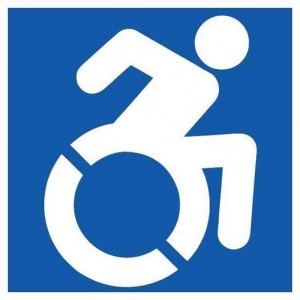Many of us will experience at least a temporary disability. Accidents will happen and you could find yourself using a wheelchair or walker. As we mature and grow older, getting around our home becomes more difficult. Then we ask “How can I get up those steps or through that narrow door?” Planning for this comes from far sighted homeowners, builders and remodelers who anticipate our limitations and changing needs.
Traditional home builders have never really considered the needs of those who are disabled or elderly, and that can make life really hard to deal with at times. We understand these difficulties and we want to help you make your life a little easier and more productive.
Move or Improve?
Most of us would choose to live and retire in our own home rather than move to a nursing home or assisted living center. Your home can be remodeled and modified to accommodate your needs and physical capabilities and conditions. Your house can become more accessible with a few minor home modifications.
Wheelchair accessible house plans:
Older homes were not planned and built for accessibility. It may be impossible to modify your home to be wheelchair and walker friendly. Therefore you may have no choice but to move. Fortunately many of the newer homes are being built “open concept”. What makes a home handicap and wheelchair accessible? It’s the ability to enter the home and move around without any of the obstacles such as steps and narrow doors. There must be one entrance door without steps. The bathrooms, bedrooms and kitchen must be wheelchair accessible. We like a one story open concept home with direct access to the kitchen, bathroom and bedroom. The doors need to be at least 32” wide with a straight in approach. If the doors are located in a hallway you need plenty of turning space and 36” door. Everyone’s needs are a little different, so you may have to make a few changes to the plans to suit your individual requirements and physical limitations.
Handicap accessible home modifications:
The demand for accessible housing will increase in future years as the elderly become a larger share of our population. Independent living and the ability to take care of ourselves allows us to remain active and depend less on others. Making your home accessible with simple home modifications, such as swing away hinges, can improve your lifestyle and the ability to live at home.
Handicap Wheelchair Ramps:
Concrete, when installed properly will last many years, requiring no maintenance and can be finished with a rough texture. Wood requires constant maintenance and lasts only a few years when exposed to outdoor elements. Wood can be a real hazard, it’s slippery when wet. Although slip resistance can be improved by painting the surface with a sand additive or applying those stick on grit strips, neither method will last long, requiring repeated applications. Outdoor carpet has been used, but we find that it traps moisture and promotes rot, even when using treated wood.
Accessible Doors:
In order to accommodate a wheelchair, (a standard wheelchair is 24-27″ wide), doorways should be a minimum of 32″ wide. If the doorway is located in the typical hallway and requires turning a wheelchair, you’ll need a 36″ door. It can be difficult to open a swinging door without a clear floor space (18-24″) on the pull side of the door. An alternative could be the installation of an automatic door opener, but they are very expensive. Pocket doors can be an option. Look out for plumbing and electrical lines. If there’s utilities located in the wall you can consider double wall installation.
Swing away offset hinge:
Additional door clearance can be economically obtained by using the swing clear, expandable door, offset door hinges, increasing the width by about 2″, and is often enough to provide the necessary minimum width for a wheelchair or walker to pass through the doorway.
Accessible Kitchens:
An accessible kitchen should provide a minimum 5 foot diameter floor space clearance to allow room for a wheelchair to turn around. It can be difficult for people in wheelchairs to reach over standard 36″ high counter tops, they should be lowered to 30″ providing a minimum knee clearance of 27″ from the floor. Under counter base cabinets can be removed for access to the sink or work area. The sink should be shallow and pipes or sharp objects covered to prevent injury. A single lever faucet should be used. A pull out or drop leaf shelf can be added for a working space. Sliding shelves or baskets can be installed in lower cabinets. A “Lazy Susan” can be added to the pantry. Electric receptacles, garbage disposal and exhaust fan switches can be moved to the front of the counter or cabinet.
Handicap Grab Bars:
Grab bars and safety rails to insure you won’t lose your balance and provide a safe, accessible surrounding. Safety bars provide stability for everyone, including the elderly and those with physical limitations. It’s the most cost effective home modification.
Closets:
Most walk-in closet doors are only 24″ wide. The door can be widened, shelves and rods lowered or adjustable shelving installed. Usually the light switch must be relocated and made accessible to the individuals requirement.

